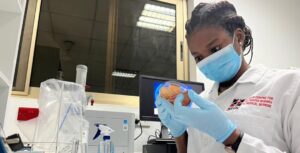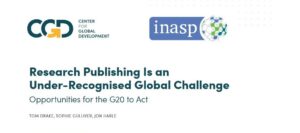Is well communicated research-evidence the panacea to evidence-informed policy making?
“How do I make my research relevant to policy?” I believe this should be an imperative question for any empirical (perhaps, also theoretical) researcher. Some researchers/scientists won’t probably agree with me, fearing that my statement implies some sort of pollution brought by the cynic political logic into the pure and linear research process. However, as a professional interested in evidence informed policy making (EIPM) and a social scientist, I believe that research and politics can find a common ground in their higher conceptions – respectively intended as a social mission and art of mediation between different interests resulting in the best possible solution for the society.
But, what is the policy maker’s imperative question? Personally, I would like the policy makers to make their choices and shape their opinions by responsibly and completely informing themselves. Let’s try to identify some of the elements that influence policy makers’ (who are human beings indeed!) opinions and choices: these are values and culture, experience, advice from their staff, pressure from their constituencies, political affiliation, electoral priorities, and results from opinion polls. Among them, research-evidence is just one competitor struggling to find its space. Hence, aiming to have policies which are exclusively based on research-evidence could appear now pretentious. I think a more realistic goal is to have the research-evidence among the influencing factors.
Many words are being spent on how to make the most influence of research-evidence. Catherine Fisher from IDS, in her recent blog made an interesting distinction, between research communication for policy influence and EIPM – the former stimulating “a change in policy based on the research communicated”, the latter due to a change in attitude of policy makers towards a systematic use of research-evidence to formulate their policies. Moreover, in the debate generated during the International Conference on Evidence-Informed Policy Making (ICEIPM) organised in Nigeria by INASP, NACETEM and POST (February-March 2012) a clear distinction resulted between supply of research evidence (research packaging and communication) and demand for it (depending on policy makers’ attitude towards research outcomes).
In the current debate on how to make research-evidence relevant to policy making, the communication and packaging of research outcomes plays a major role. Indeed, important research organisations and think tanks (such as ODI, IDS and 3ie) spend a significant proportion of their budgets in research communication. For example by producing and distributing policy briefs, documents which summarise piece(s) of research on a particular issue and draw recommendations and political implications (this is a very general definition indeed!). The policy briefs are usually written in accessible format that should make them more comprehensible to policy makers and, eventually, influence policy making process.
However, is the production of tools to communicate research outcomes (supply side) balanced by the willingness and capacity of makers to understand, select and use research-evidence (demand side)? The answer is, in my opinion, not always. I have recently had a chat with a research officer from an influential organisation (secret identity!) who told me: “we need to communicate and package our research in the simplest way to get policy makers to understand it”. I see their point — but research is all but simple. Albert Einstein (a never-ending source of clever quotations) summarised my concern when he said: “Everything should be made as simple as possible, but not simpler”. Another implicit risk in concentrating all the efforts in communication of research is to focus too much on how the research is communicated and less on the quality and the content of the research that is communicated. In other words, I believe that research communication, advocacy and capacity building are complementary, not mutually exclusive, processes in changing the attitudes of policy makers towards more EIPM.
In an ideal world (at least mine), evidence-literate policy makers (Newman, 2011) should be able to understand and use research-evidence and research should be communicated and packaged to make the most influence of it. After all (and again in this ideal world of mine), I think that by advocating for the use of research-evidence in policy making, more evidence-literate policy makers will stimulate the production of higher quality research and this will have, eventually, a (positive) impact on the whole society.




